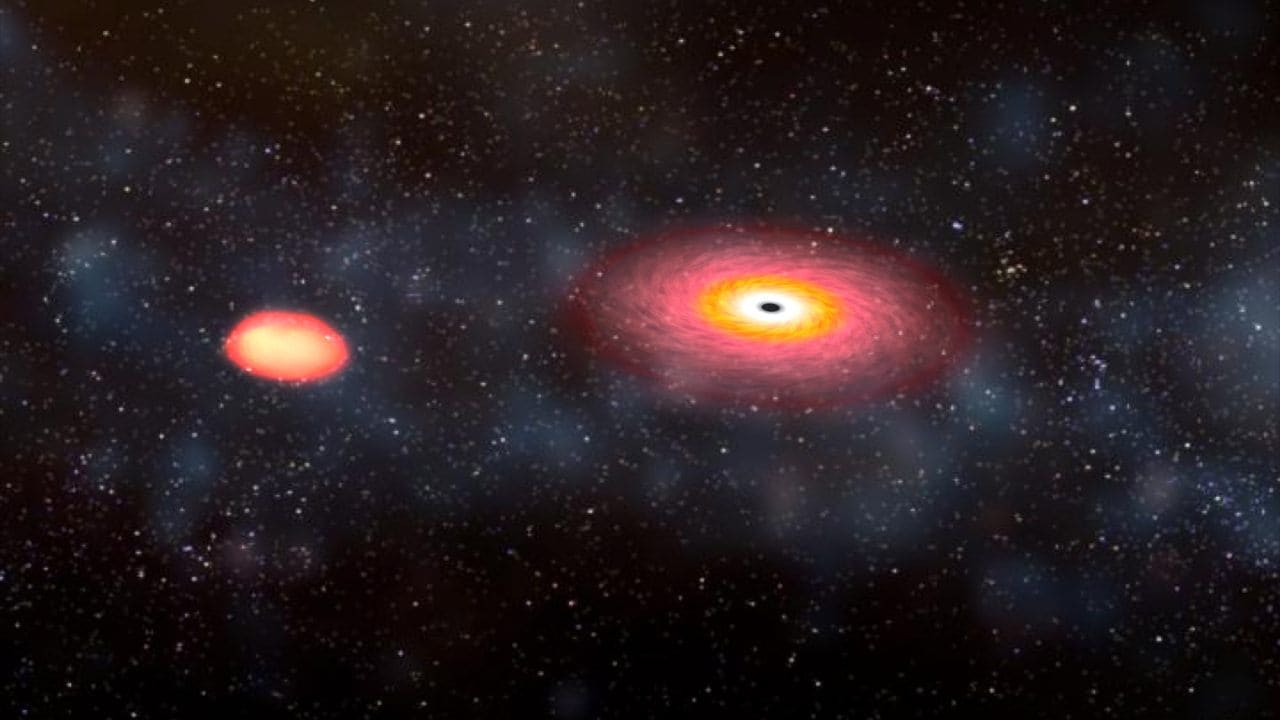FP TrendingOct 30, 2020 13:39:50 IST
Director of Pune-based Inter-University Centre for Astronomy and Astrophysics (IUCAA), Somak Raychaudhury has stated that black holes don’t move around sucking in objects, as part of his trial towards busting myths about them.
Speaking during the online lecture on ‘The Nobel Prize 2020: Physics – Unravelling the Mythical Black Holes’ organised by Nehru Science Centre, Mumbai, Raychaudhury said that unlike how they are portrayed in science fiction movies, black holes do not go around sucking in other objects like a vacuum cleaner. He stated that if the Sun was to turn into a black hole, it would not suck other planets and that the earth would still be revolving around the sun as if nothing happened, except that there would be no light and the planet would turn very cold, reported Deccan Herald.

A black hole devours another celestial object. Representational Image. Image credit: Dana Berry/NASA
Raychaudhury went on to focus in how the contribution of different scientists over different periods of time, including that of Isaac Newton have resulted in a better understanding of black holes.
Raychaudhury also pointed out how there is a ‘Calcutta connection’ of Nobel Prize for black holes.
According to him, both Stephen Hawking and Roger Penrose, in their study about black holes have used the formalism laid down by Amalkumar Raychaudhuri, a professor of physics at Calcutta University’s Ashutosh College in 1955.
As per Raychaudhury, whole the paper says nothing about black holes, it is a concept of ‘differential geometry’ which Hawking used to define how a spinning star with angular momentum collapses and distorts space-time to finally end up in a singularity.
He added that a black hole has two basic parts — the singularity and the event horizon. According to the researcher, the singularity is at the centre and is where the mass resides and it was Stephen Hawking and R. Penrose who wrote the first paper on Singularities.
According to an article in The Times of India, the Raychaudhuri Equation is in the spotlight after the Royal Swedish Academy of Science awarded one half of the 2020 Physics Nobel to Roger Penrose for throwing light on Black Holes. The other half of the Nobel was jointly given to Reinhard Genzel and Andrea Ghez.
Post a Comment